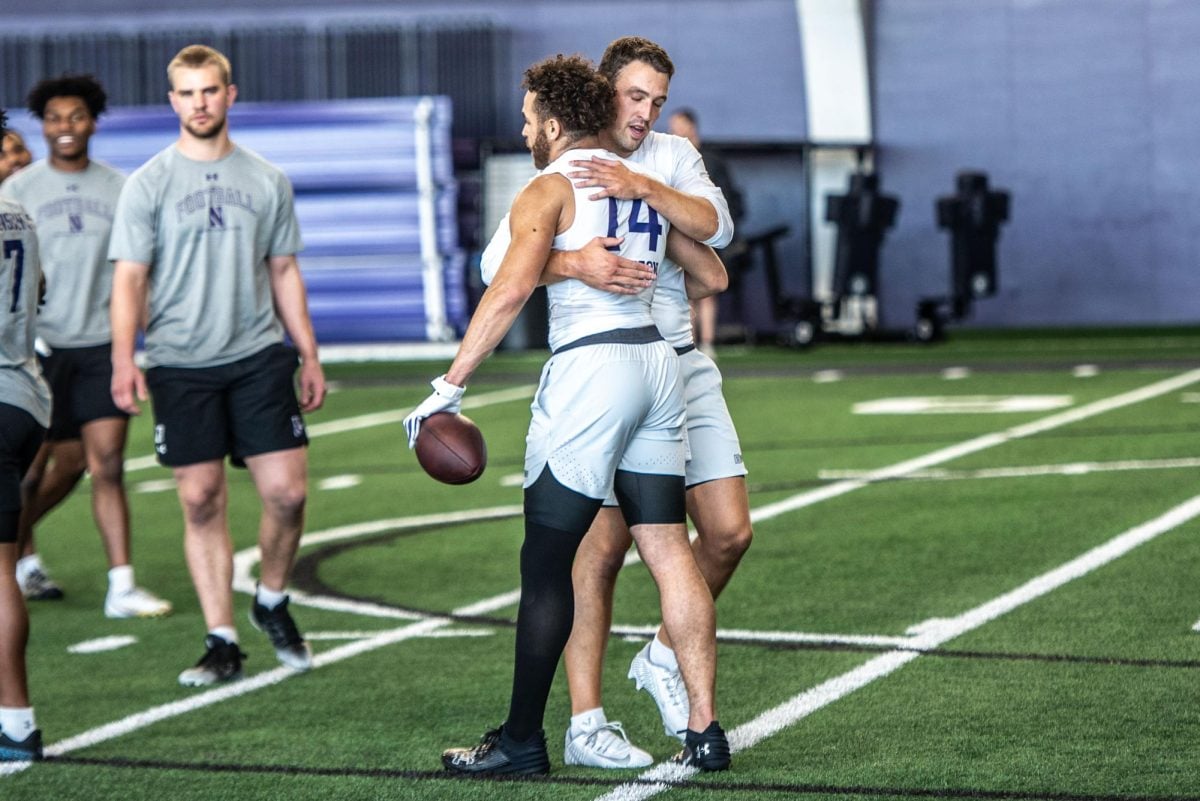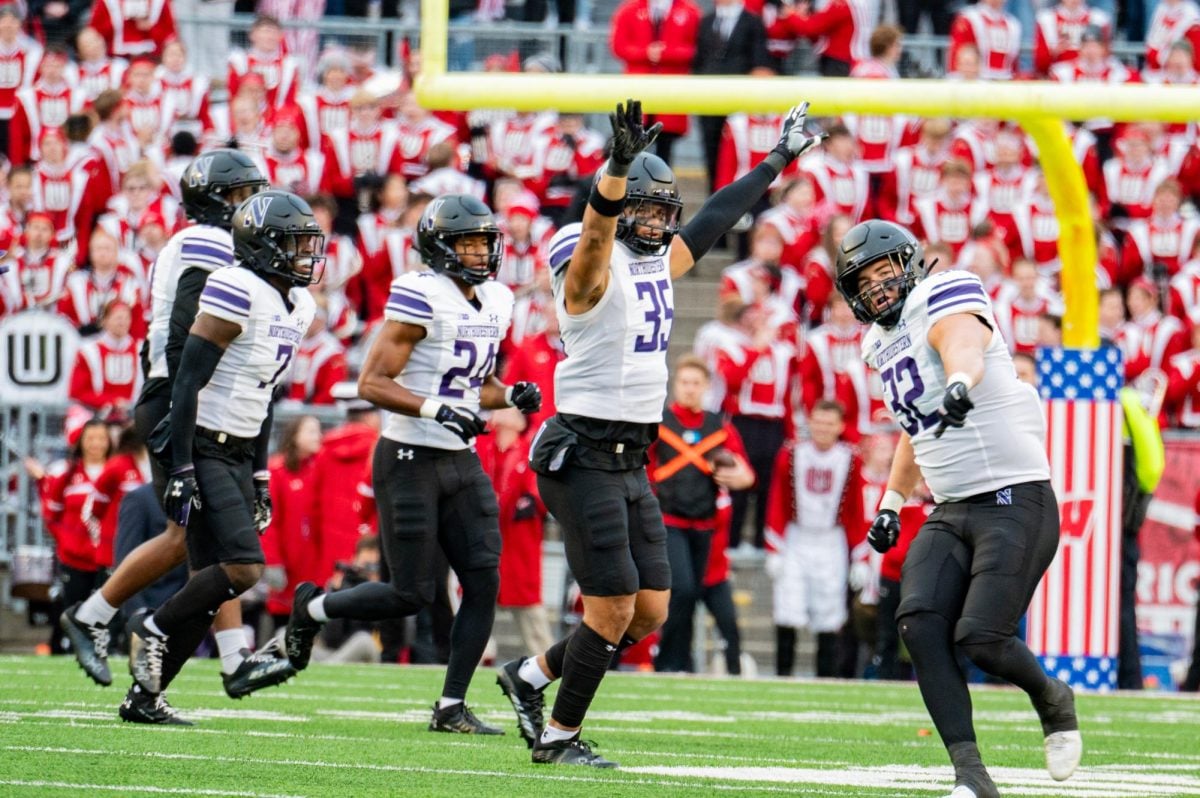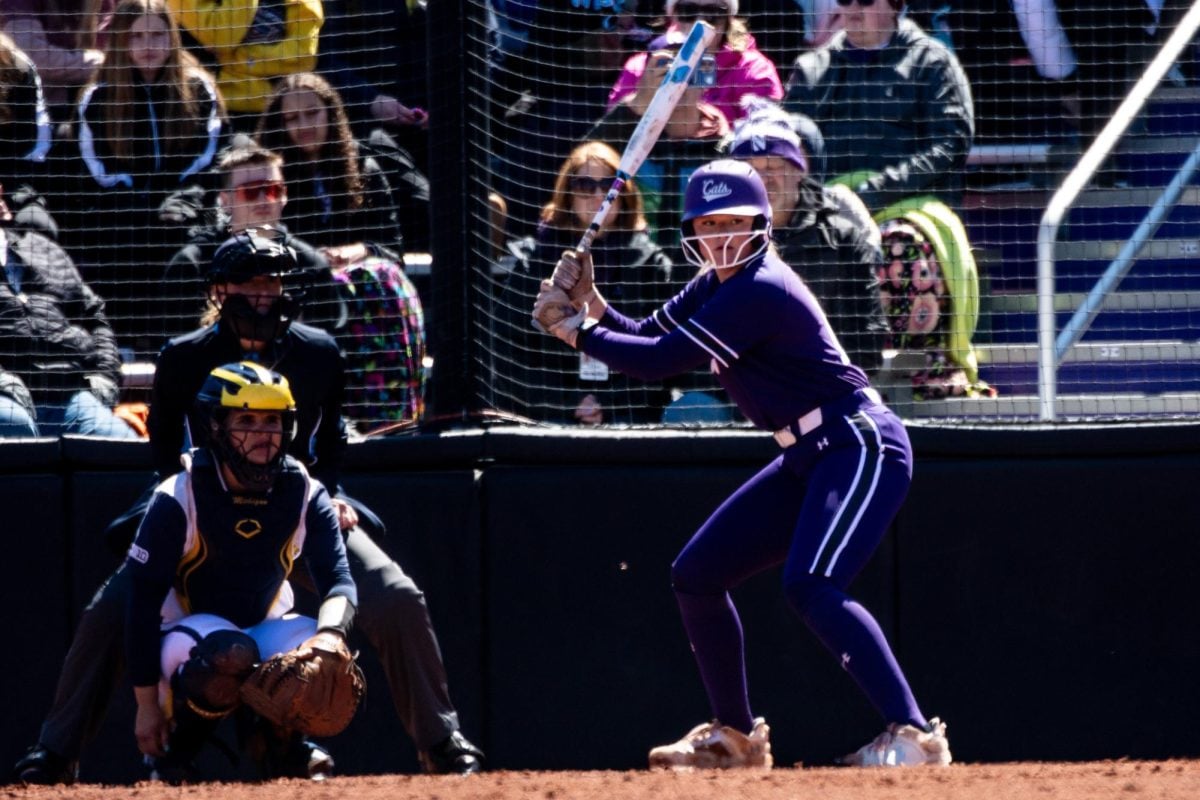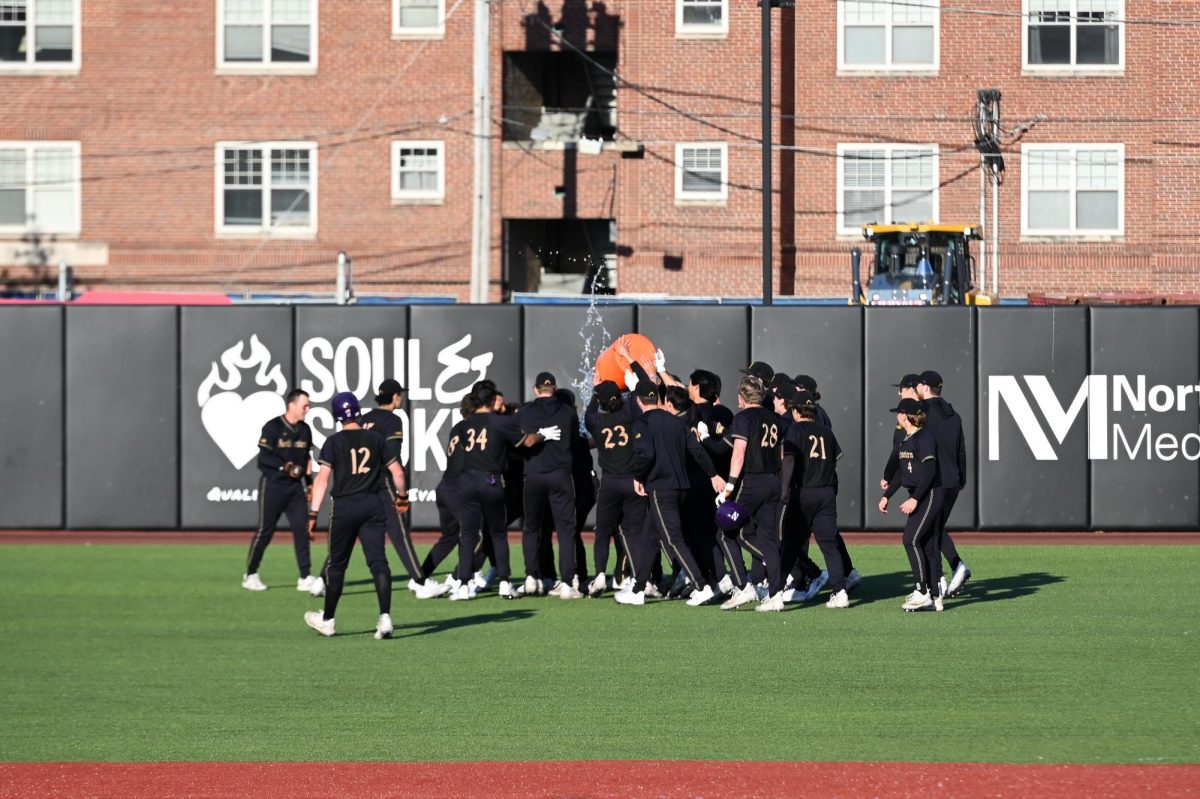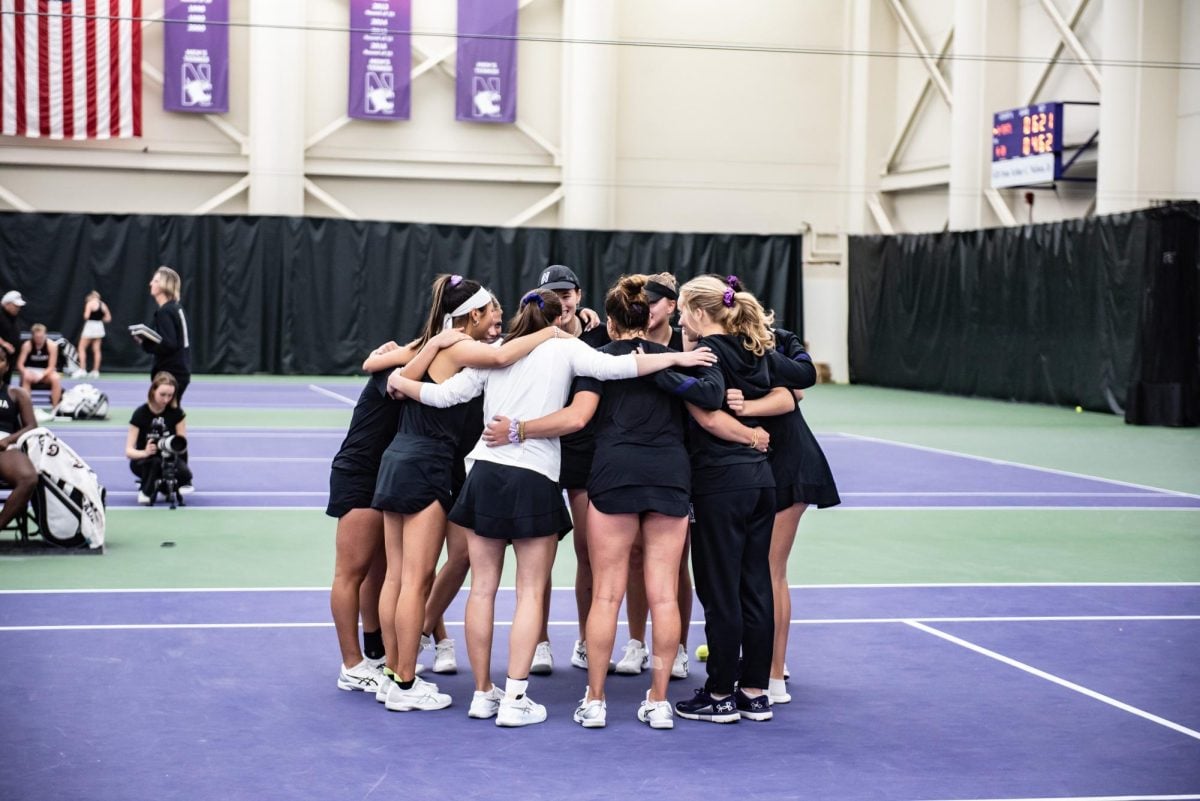Starting Oct. 1, 2011, Northwestern will start having to share its “NU” moniker with a new in-conference foe – Nebraska. And that’s just the start of changes coming now that the Big Ten’s membership has moved even further from its name.
The addition, announced in June, boosts Big Ten membership to 12 schools, enough to satisfy NCAA requirements for a conference championship game for football.
“(Nebraska) is a strong university and obviously a tremendous brand when you look at sports across the board, including football, with multiple national championships, multiple Heisman trophy winners,” Northwestern Athletics Director Jim Phillips said. “They have similar values to our schools in the Big Ten. It’s a tremendous addition for us as a conference.”
It’s the first time that the Big Ten has expanded since it went beyond its namesake and added Penn State to the football schedule in 1993. Phillips said newcomer Nebraska could be just as strong for the conference.
But despite the addition, the conference has no plans to change its name, Big Ten Commissioner Jim Delanysaid. There is a new logo on the way, tentatively scheduled to be unveiled in December, he said.
Conference divided
The expansion means the Big Ten will be split into two divisions for football, a first in conference history. The winners of each division will meet in a championship game, starting with the 2011 season.
NU will join Iowa, Michigan, Michigan State, Minnesota and Nebraska. The other division features Illinois, Indiana, Ohio State, Penn State, Purdue and Wisconsin. The names of the divisions have not yet been decided.
Delany and the athletic directors of the 12 member schools had three criteria for splitting the divisions, Delany said. Most importantly, they strived to make the divisions as equally competitive as possible. Next, they sought to preserve traditions and rivalry games. Finally, they considered geography, “but not to the extent that it would dilute” the other two, he said.
To ensure competitive balance, the directors looked at each school’s record over the past 17 years – dating back to when Penn State started Big Ten play.
The teams with the best records were Nebraska, Ohio State, Michigan and Penn State, Delany said. Next were Iowa and Wisconsin. NU fell in the bottom tier, joined by Illinois, Indiana, Michigan State, Minnesota and Purdue.
Phillips said the Wildcats were most closely paired with Michigan State, despite the fact that the schools were placed in the same division.
As for the geography, most of the schools in NU’s division are in the northwest, while most of the schools in the other division are in the southeast.
With the new divisions comes a new conference schedule, in which each school plays every other school in their division each year, in addition to three schools from the other division.
The directors gave each school one protected cross-division rivalry that will be played every year, preserving such traditional matchups as NU-Illinois and Michigan-Ohio State.
But while the Michigan-Ohio State game will be played on the last week of the season every year, the NU-Illinois game will be subject to random placement throughout the season.
Sophomore running back Arby Fields said “it would be cool” to play the game on the last week of the season.
“You know the other conferences, like UCLA and USC – that’s what I’m used to – you play it at the very end of the season,” he said. “It should be at the end of the season.”
While the 2011 matchup of NU and Illinois will be the conference opener for both schools, the Cats are scheduled to host the Illini for the teams’ last game of the conference slate in 2012.
League now ‘a lot harder’
NU catches something of a lucky break in beginning of the division schedule. Absent from the Wildcats’ schedule for the next two years are Ohio State and Wisconsin, two of the elite football programs of the conference.
Ohio State, currently ranked No. 2 in The Associated Press poll, has won the past five conference championships. Wisconsin, ranked No. 11, will likely return junior tailback and 2009 Big Ten Offensive Player of the Year John Clay as well as last year’s team-leader in receptions and receiving yards, junior Nick Toon.
While not having to play two top contenders for next year’s Big Ten championship might seem favorable, the junior quarterback Dan Persa said he would rather see how the Cats measure up against the conference’s best.
“I would like to get another shot at Ohio State,” said Persa, who last faced the Buckeyes during an ugly 45-10 home loss in 2008.
With Ohio State not on NU’s schedule the past two years and its continued absence for two more, Fields will never play against the Buckeyes unless the two teams meet in a conference championship game.
“That kind of sucks. We want to play those guys. You have your opportunity to go and compete and see where you’re at,” Fields said. “One of the reasons I wanted to come here was to play against Ohio State.”
While the Cats will not get their shots at the Buckeyes or Badgers the next two years, another powerhouse team, Nebraska, will become a regular part of the Cats’ schedule because they are in the same division.
“They’re a great team,” Persa said. “You find out how good you are when you play great teams like that. And Lincoln’s a special place. I’m looking forward to going there.”
Nebraska will enter the Big Ten after winning the Big 12 North Division last year and narrowly falling to Texas in the Big 12 title game. The Cornhuskers won three national titles in the 1990s and played in bowl games eight times over the past decade.
“This league just got a lot harder to win and a lot more difficult,” coach Pat Fitzgerald said of the addition.
NU will get its first crack at the Cornhuskers on Oct. 8 next year.
Financial impact unclear
Ultimately, the decision to add Nebraska did not come down to Phillips, Fitzgerald, or anyone in the athletic department, but rather the presidents of each member school, including NU president Morton Schapiro.
In an interview with THE DAILY in May, Schapiro said he took his role in the process very seriously because “a lot of people seem to think it’s extraordinarily important to the future of college sports in this country.”
Schapiro and the other presidents voted unanimously to add Nebraska, as well to approve the new divisions.
It’s believed that they chose the Cornhuskers partly because they were the Big 12 team most willing to join the Big Ten (an early media favorite, Missouri, ultimately committed to staying in the Big 12). Nebraska’s membership in the Association of American Universities was also considered; the Big Ten is the only conference in the country whose members are all also AAU members.
But nobody except for the college presidents know the exact thinking behind the pick.
Another mystery, for now, is the ultimate financial impact of Nebraska’s addition. While it’s obvious that the move will noticeably increase revenue, the specifics are not yet clear, Phillips said.
Delany said he hopes the expansion as well as the creation of a conference championship game will increase the appeal of the Big Ten.
“It’s going to create a lot of new interest and I wouldn’t be surprised to see both the people who watch us on TV go up in number as well as the people who come to our games,” Delany said. “I think it’s a better product as a result of Nebraska being in the Big Ten.”
And if expansion is such a positive, are more teams on the way? Maybe, but not now, Delany said at Big Ten Media Day in August.
“We’ll pause, but we’re not necessarily turning our backs on expansion,” he said. “We said we wanted to study it for twelve to 18 months, when we’re only about six months into that study.”



